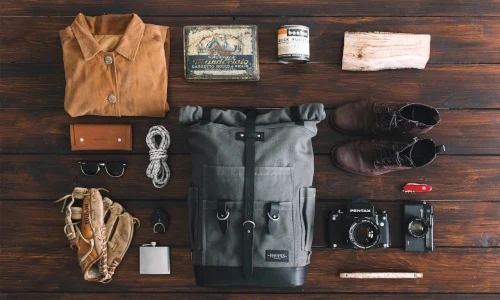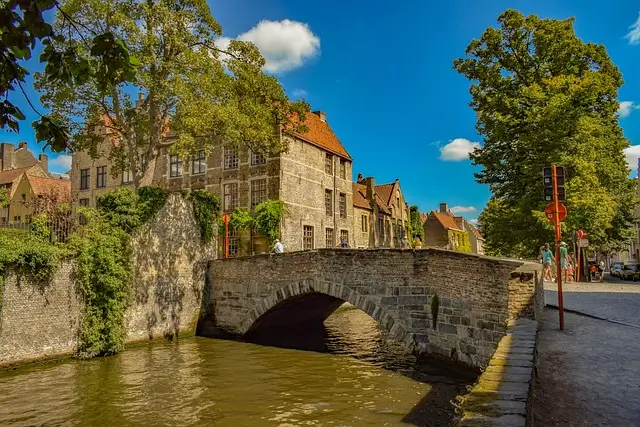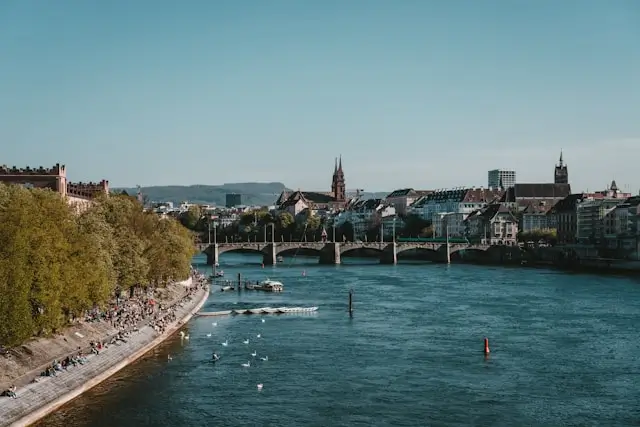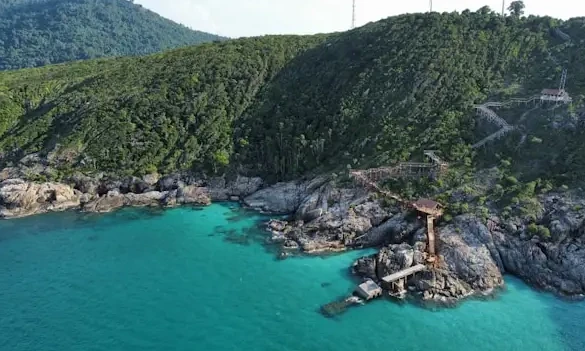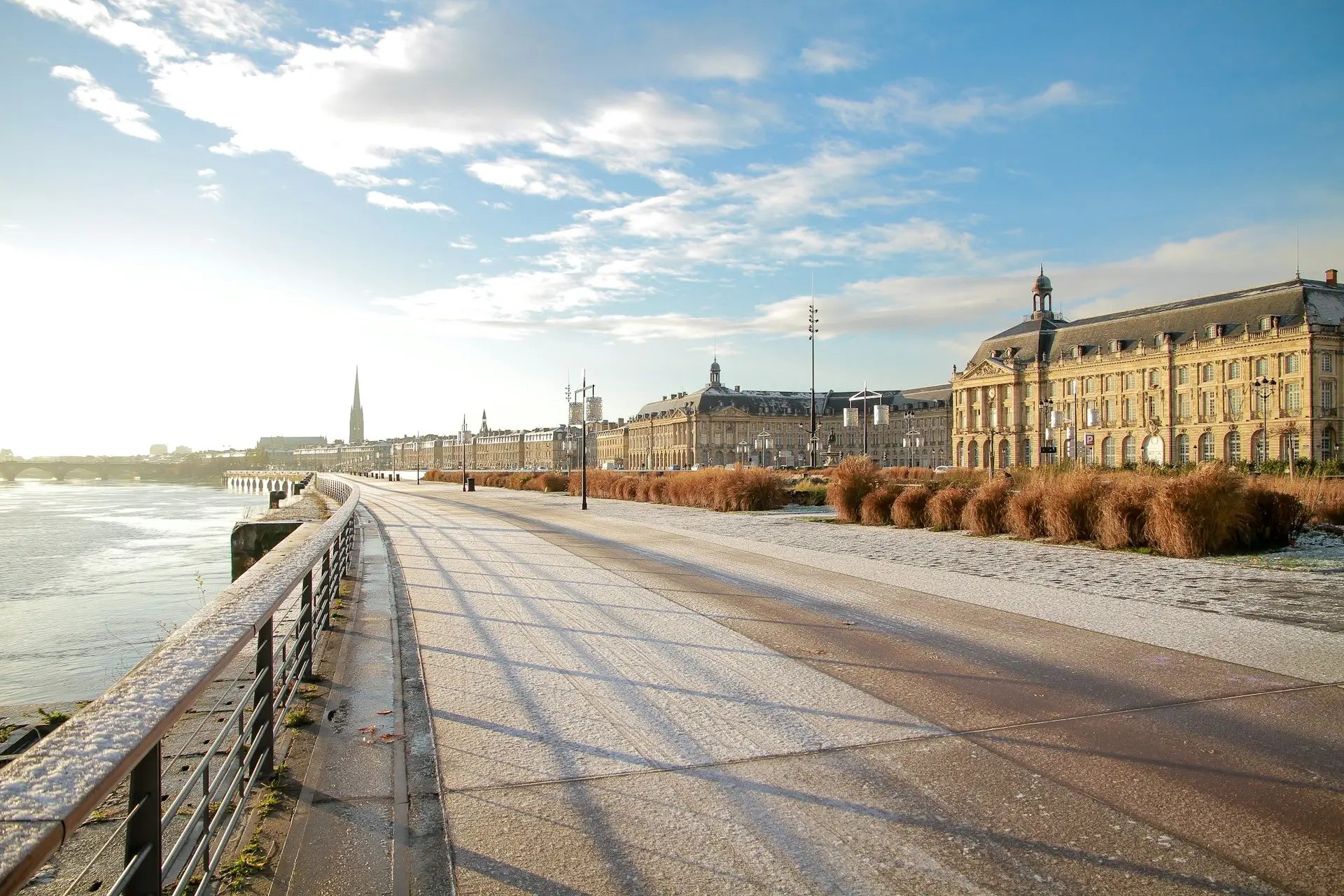The Ultimate Traveler's Guide: Essential Gear for Every Adventure
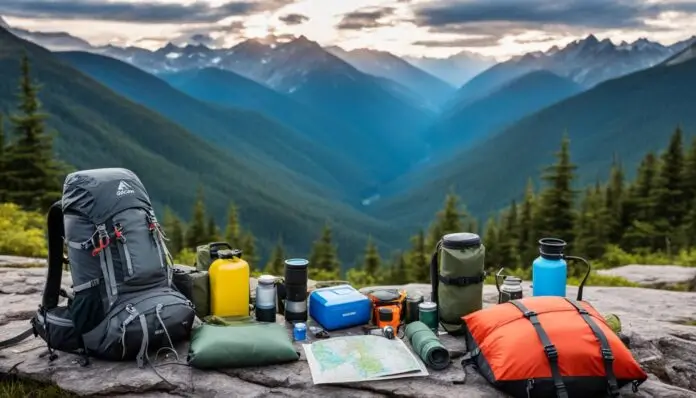 The Ultimate Traveler's Guide
The Ultimate Traveler's GuideHave you ever faced a situation when you are halfway up a mountain trail and your worn out shoes are falling apart? Sound familiar? We've all been there.
Traveling is so much more than getting to a destination, it’s about the enjoyment of your journey and not having to worry about forgetting something in your suitcase. Your gear can either be the ultimate dream trip killer or an amazing dream trip maker.
Whether you are going on a weekend getaway or a month backpacking trip, the right equipment is important. You wouldn’t want to purchase expensive basics at your destination or overlook great photo opportunities because your camera battery died.
This guide will show you the must have travel gear for seasoned adventurers and newcomers. With us, you’ll be packed smarter, not harder, so you’re prepared for whatever your journey has in store for you. So let’s start this amazing journey.
10 Essential Gear for Every Adventure
First, let’s discuss the most important and must have gear for your adventure. If you’re hauling your essentials or otherwise navigating unfamiliar trails, the right tools make all the difference. When you have these in your support, you’ll go from being unsure, to liking the ride.
Choosing the Right Backpack
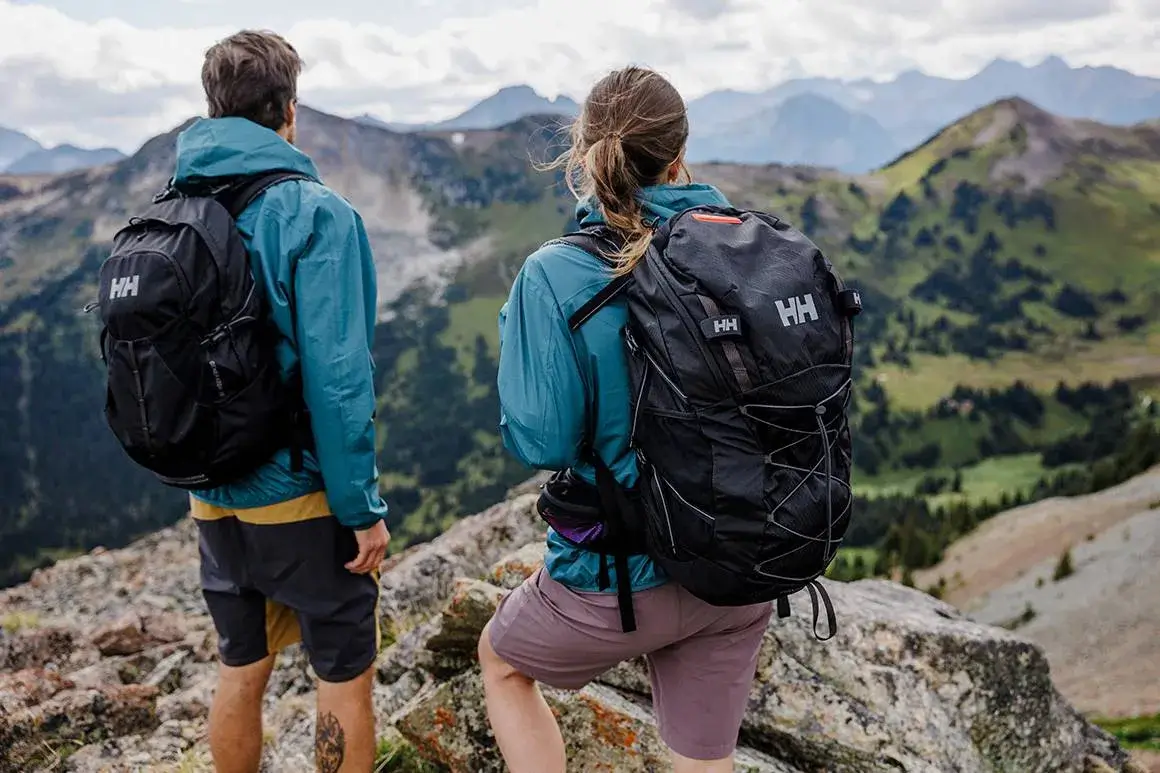 Choosing the Right Backpack
Choosing the Right BackpackYour backpack is your No. 1 travel companion, it holds everything you need and keeps your hands free for adventure. An improperly chosen pack can turn a pleasant journey into a painful ordeal, while a well chosen pack makes all the difference.
A good backpack spreads the weight evenly across your shoulders and hips, so you don’t get tired. It organizes and protects your gear from the elements while allowing you easy access to it.
Types of backpacks:
- Daypacks (20-30L): Perfect for short hikes and city exploration
- Multi-day packs (45-65L): Ideal for extended wilderness trips
- Travel backpacks (35-45L): Designed for urban travel with laptop compartments and security features
Prefer to use water resistant materials for the sake of durability. Seek out adjustable shoulder straps and a padded hip belt for comfort. Size based on your torso length. Before you go on your trip, test the pack with weight.
Navigation Tools
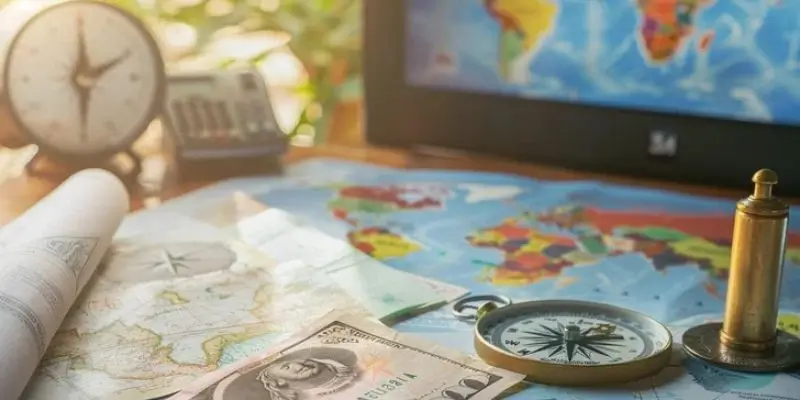 Navigation Tools
Navigation ToolsIn today’s digital age, having reliable navigation tools is still very important for any adventurer, especially when you’re venturing off the grid, where there’s no cell service.
Navigation equipment will make sure you are safe, guide you, and give you the confidence to travel to new places without worrying about getting lost.
Types of navigation tools:
- Traditional: Topographic maps, magnetic compass, altimeter
- Digital: Handheld GPS devices, smartphone apps (Maps.me, AllTrails)
- Hybrid: Smart watches with GPS functionality, satellite communicators
- Backup: Paper maps and written directions
It's always a good idea to carry backup battery power for electronic devices. Before your trip, learn to read maps, too. When available, download maps offline. Mark waypoints on your route, and key potential emergency exits. Devices should be kept safe from water and from extreme temperatures.
Clothing and Layering Systems
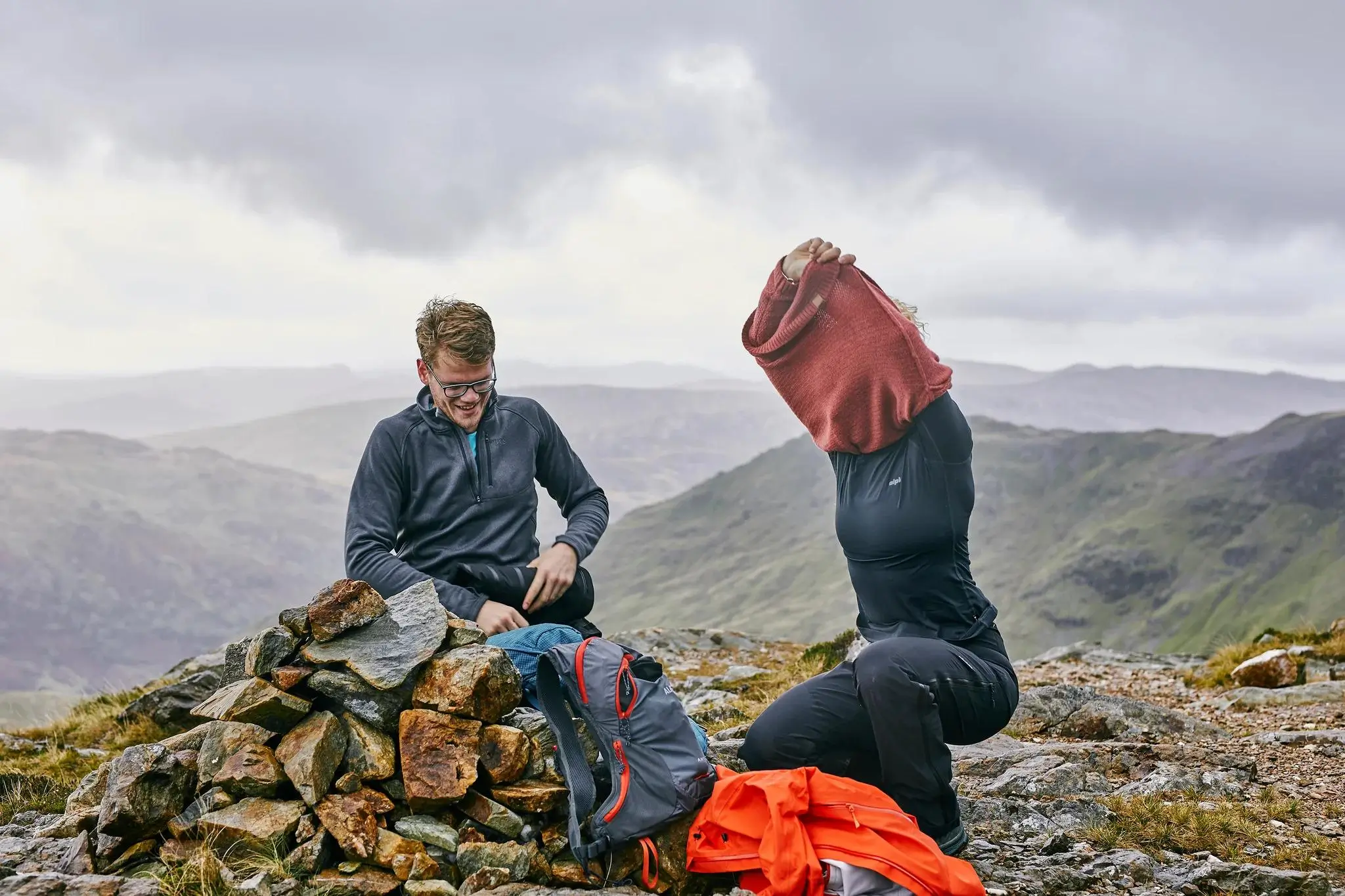 Clothing and Layering Systems
Clothing and Layering SystemsWhether you are hiking, camping, or even traveling, what you wear can make or break your adventure, providing protection from elements and comfort in changing conditions, or not.
Your body temperature is controlled, moisture is managed and your layering system adapts to different weather conditions and certain activity levels.
Essential layers:
- Base layer: Moisture wicking materials like merino wool or synthetic.
- Mid layer: Insulating pieces like fleece or down.
- Outer layer: Weather protection including waterproof or breathable shell.
Pick fabrics that dry quickly instead of cotton. Choose versatile pieces that will combine well. Packable, lightweight options for changing weather are included. Think about the climate and what you will be doing. Pack darker colours that do not show dirt and wear well. Try your layering system before the trip.
Footwear for Every Terrain
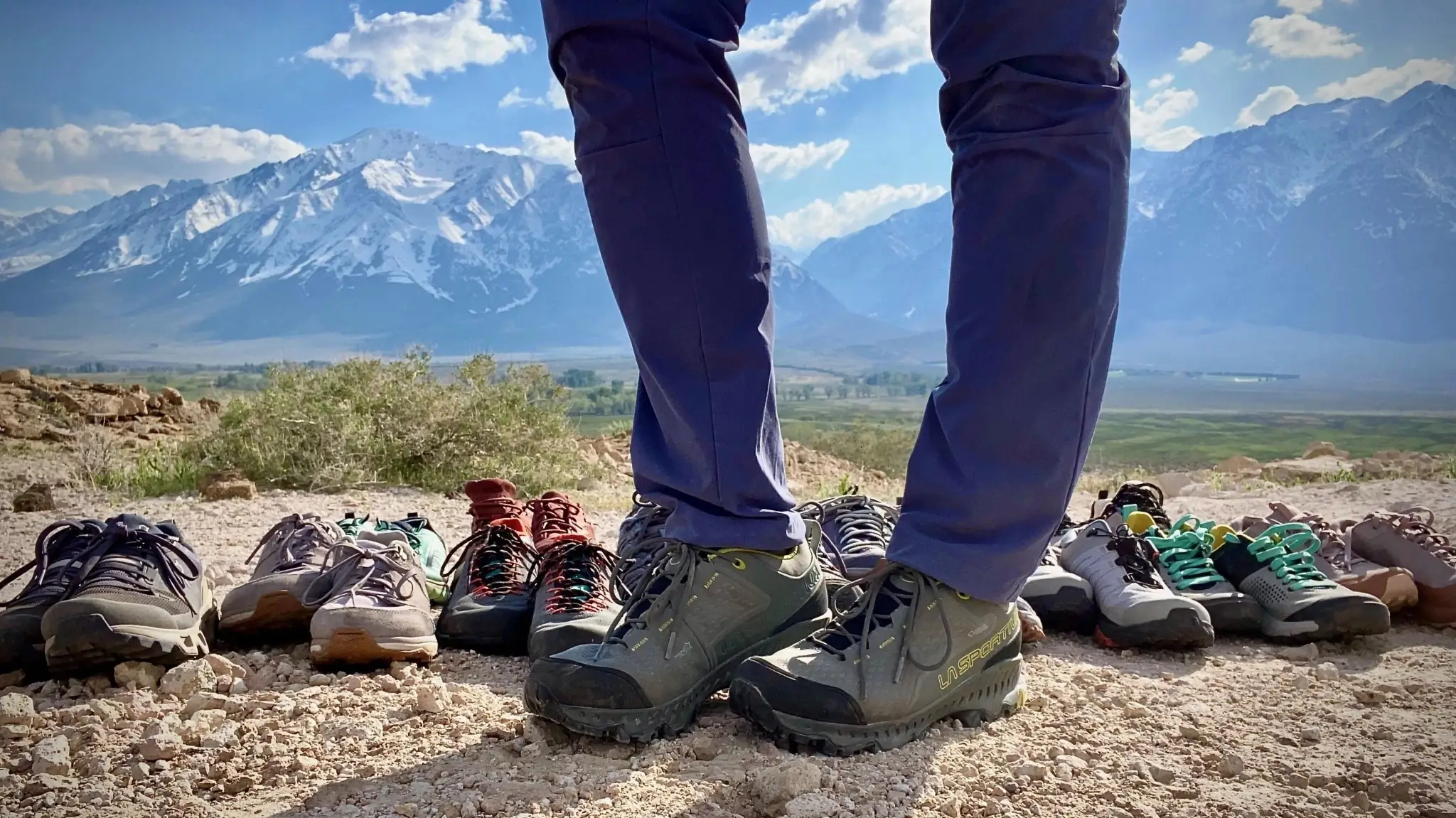 Types of adventure footwear
Types of adventure footwearWhen you go on any adventure your footwear choice affects your mobility and comfort, not to mention your safety, so footwear is definitely one of the most important decision makers in your adventure trip.
Good footwear prevents injuries, supplies the right support, and keeps you comfortable on long days of travel.
Types of adventure footwear:
- Hiking boots: Ankle support and durability for rough terrain
- Trail runners: Lightweight options for less demanding trails
- Water shoes: Protection during water activities
- City walking shoes: Comfort for urban exploration
Must give space for thick socks and swollen feet. Think about whether you want water resistance and breathability. You should pack socks to wear with every footwear type.
Travel Technology and Gadgets
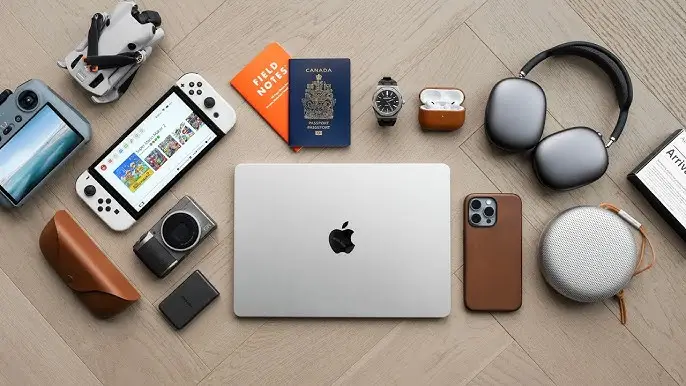 Travel Technology and Gadgets
Travel Technology and GadgetsIn today’s world of connectivity, the right tech gear keeps you powered, connected and ready to capture every moment of your adventure.
Modern technology allows you to stay connected with loved ones, guide your way through unfamiliar places, record memories and organize your way out of an emergency while on the road.
Essential travel technology:
- Power solutions: Portable chargers, solar panels, universal adapters
- Communication devices: Unlocked smartphone, satellite communicator
- Photography gear: Action camera, smartphone gimbal, portable tripod
- Entertainment: E-reader, noise-canceling headphones, tablet
Small pouches or clips will help you organize cables. Waterproof cases are best for electronics. Keep back up to important documents. Get offline content downloaded before departure. In order to do this, you must consider weight and the necessity of each device. Prior to your trip, test all equipment.
Survival and Safety Gear
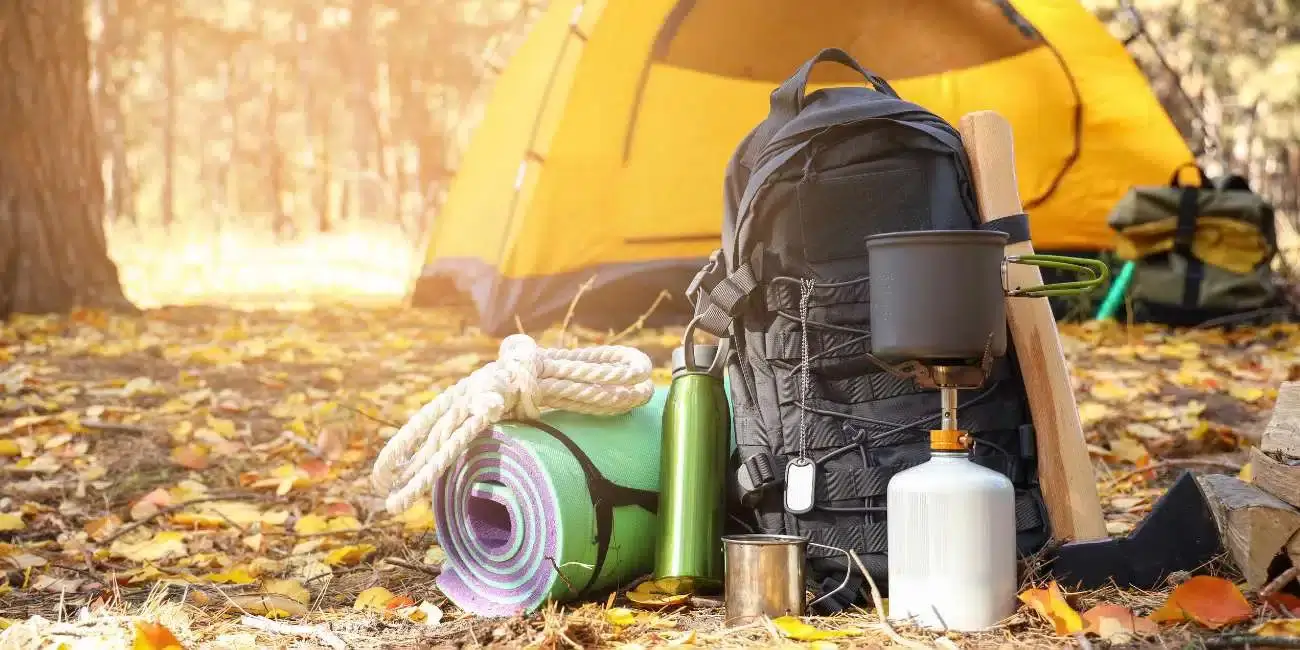 Travel Safety equipment
Travel Safety equipmentSafety equipment isn’t just for emergencies, it gives you peace of mind and prepares you for the unexpected that can occur on your adventures.
Proper safety equipment can stop minor problems from becoming major and give you a big hand in emergency situations.
Essential safety items:
- First aid supplies: Bandages, medications, antiseptics, tape
- Emergency tools: Multi-tool, flashlight, fire starter
- Survival gear: Emergency shelter, whistle, signal mirror
- Navigation backup: Paper maps, compass, emergency beacon
You also need to learn how to use every item in your kit. Must look at expiration dates before going. Don't forget to customize your kit for those specific destinations. Keep items you need to have easy access to. Used or expired items should be replaced right away. Check local regulations and airline restrictions.
Food and Water Essentials
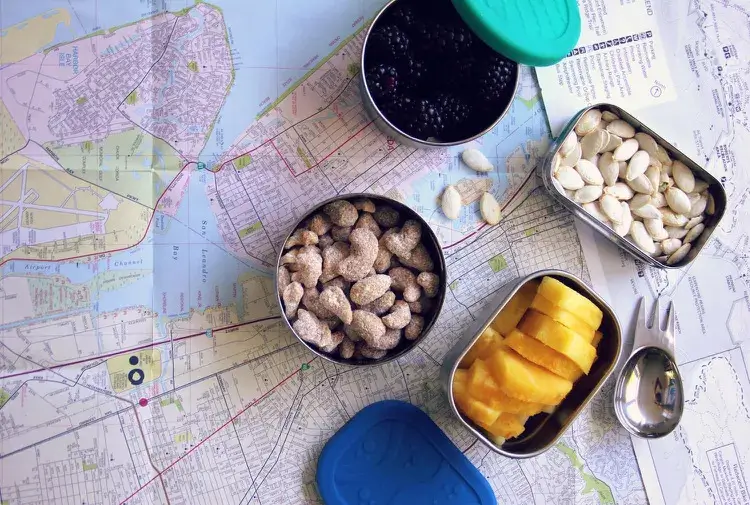 Food and Water Essentials
Food and Water EssentialsWhatever destination you seek, staying properly nourished and hydrated is key to energy and health.
Healthy energy and body maintenance in remote places come from proper nutrition and hydration.
Essential food and water gear:
- Water treatment: Filters, purification tablets, UV sterilizers
- Hydration systems: Collapsible bottles, water bladders
- Food storage: Bear-proof containers, dry bags, lightweight containers
- Cooking equipment: Portable stove, fuel, utensils
Remember to determine the daily water needs by climate and activity. Try to take calorie dense, lightweight foods. Get a feel for local water safety conditions. Meal planning should be done according to available cooking facilities. Also take into consideration dietary restrictions.
Sleeping and Shelter Options
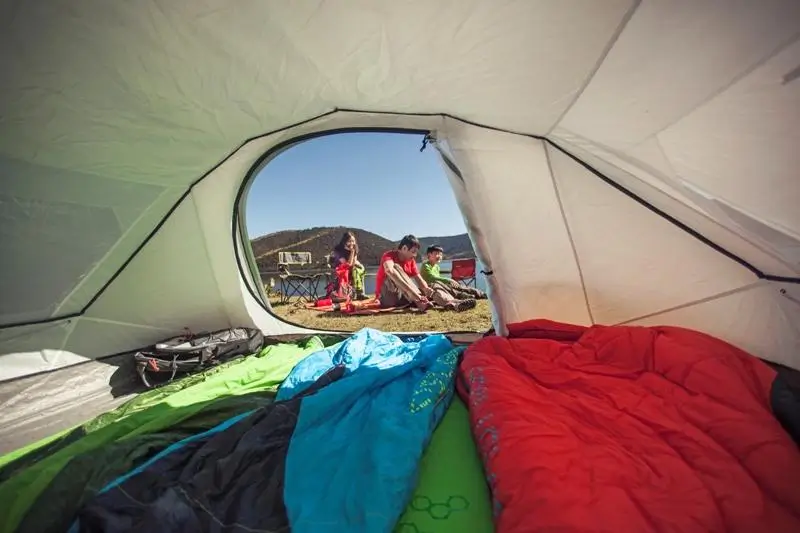 Outdoor adventure
Outdoor adventureThis gear category is all about comfort and safety and contains items like quality sleep and reliable shelter that are fundamental to enjoy any outdoor adventure.
Resting properly allows you to have proper energy to keep going, recover and to be ready for each day's work.
Essential sleep gear:
- Sleeping bags: Temperature appropriate, compression friendly
- Shelter options: Lightweight tent, bivy sack, hammock system
- Sleep comfort: Sleeping pad, pillow, eye mask
- Weather protection: Rainfly, groundsheet, tent footprint
Must choose gear rated for worst expected conditions. It is so helpful to test setup before your trip. Consider packed size and weight. Pack repair materials for emergency fixes. Learn proper care and storage methods for your gear.
Organization and Packing Tips
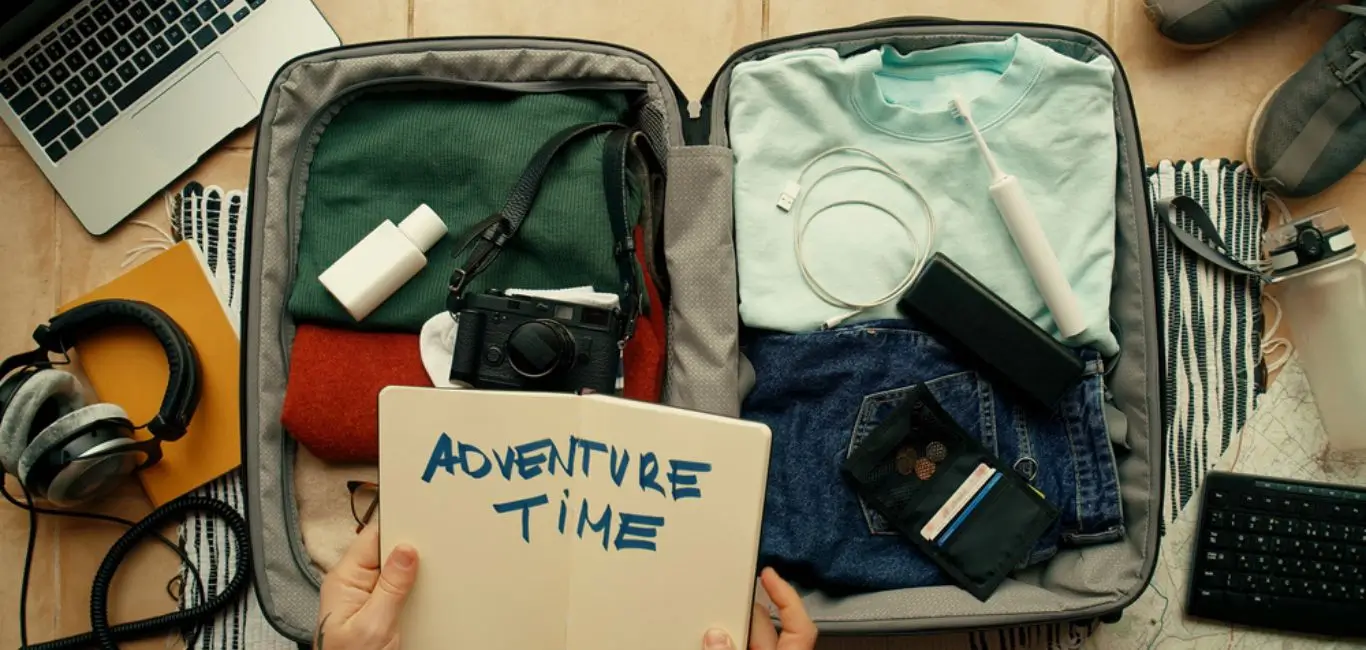 Packing Tips
Packing TipsAn efficiently packed travel companion, smart organization turns a chaotic backpack into one that comes with a plan.
Having your gear well organized will ensure you find the right thing in time when you need it. It will also help you to keep your belongings protected and make the most of the space in your pack.
Essential organizing tools:
- Packing cubes: Different sized compartments for clothes and gear
- Dry bags: Waterproof protection for electronics and documents
- Compression sacks: Space saving solutions for bulky items
- Small pouches: Quick access storage for frequently used items
Keep color code cubes for different categories. Have items you use often easily accessible. When it comes to loose items, use stuff sacks. Make your own personal packing system and stick to it. Pack at home as efficiently as possible before trips.
Destination-Specific Gear
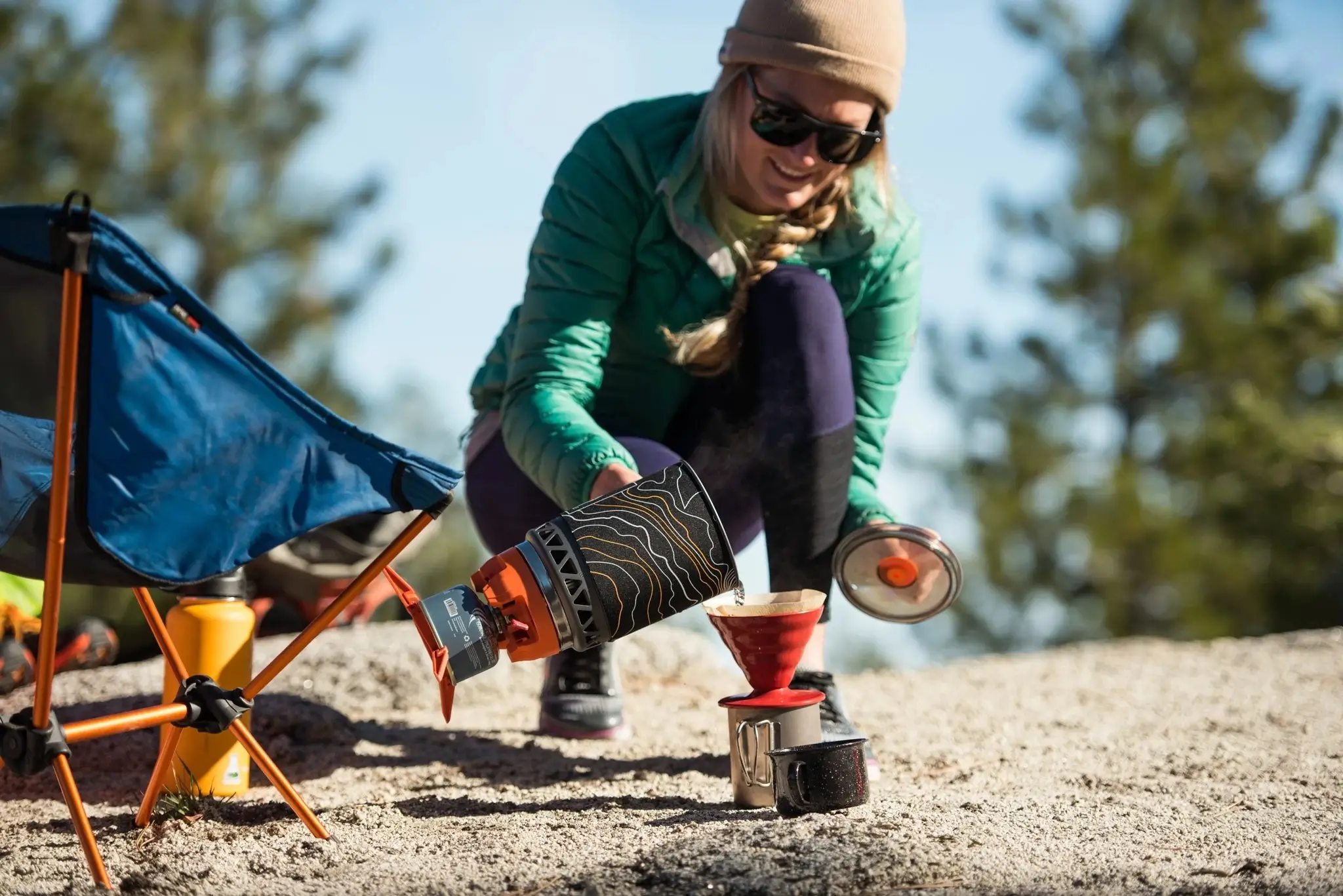 Destination-Specific Gear
Destination-Specific GearEach destination has its own challenges and requirements and requires specialized gear for its own comfort and safety.
However, the right specialized gear is to deal with environmental challenges and enjoy the destination specific activities which will make all the difference.
Essential considerations:
- Climate gear: Sun protection, insulation, or rain gear
- Activity-specific: Climbing equipment, snorkel gear, or snow gear
- Cultural considerations: Appropriate clothing and accessories
- Local regulations: Required safety equipment or documents
You should research your destination requirements prior to your trip. Prefer to pack items that can be used in more than one way. You can check seasonal weather patterns. Ask around who to talk to, consult experienced travelers, or local guides.
Your Adventure Blueprint: Nailing the Pre-Trip Basics
Generally, the difference between an epic adventure and a stressful ordeal lies in what you do before you even step out the door. The foundation of your journey is really where all great adventures begin so think of your pre trip prep.
Smart planning saves your time, money and stress, and ensures that you’re ready and willing participant for that adventure. It’s your safety net for the usual travel hiccups, and the key to getting the most out of your trip.
Pre-Trip Must Dos
Here are some pre-trip tips you should follow:
- Get to Know Your Destination: Tap into the weather, the cultural norms and what else could pose a problem. Fewer surprises, when you know what to expect.
- Pack Smart: Create lists as to what you will be doing and prioritize the essentials. Five pairs of shoes for a weekend getaway? No one needs that!
- Test Your Gear: You don’t want to be in the middle of nowhere and realize how to pitch that tent or use that fancy new navigation app.
- Document the Important Stuff: Store digital and physical copies of your passport, insurance, and emergency contacts. I promise you, you’ll thank yourself later.
- Prepare for the Unexpected: It’s always good to have a backup plan for something simple like lost luggage, delayed flights, or a sudden downpour.
Pro Tips on Smooth Travel
Do you also want some pro tips for smooth travel? Read them below:
- Start Early: For bigger trips, give yourself at least a month so you don't panic at the last minute.
- Test Pack Ahead of Time: Try out packing your luggage about a week before you leave and see what will fit (and what won’t).
- Keep Info Handy: Make a shared document for all your bookings, emergency numbers, and travel details. Bonus points for downloading any offline maps and apps you’ll need when on the road.
- Check Requirements: Check out airline or destination restrictions on gear; don’t let your trip grind to a halt because of a banned item.
It’s not wasted time; prepping it’s an investment into peace of mind. When you have a solid plan in place, you won’t be fighting fires as you go, and you’ll be able to enjoy the ride. Being a prepared traveler means you get to be a happy one.
Conclusion
The well equipped traveler is the only one who can revel in adventure around every corner. Every bit of preparation and every piece of gear, from your trusty backpack to your pre-trip checklist, is important in your journey's success.
After all, you don't need the most expensive gear or you don't have to carry it all. Just make smart choices that fit your style of adventure. Start small, learn from each trip and add to your travel toolkit as you go.
With that knowledge, it’s time to take that first step. So get up and be ready, your next great adventure is calling you.
